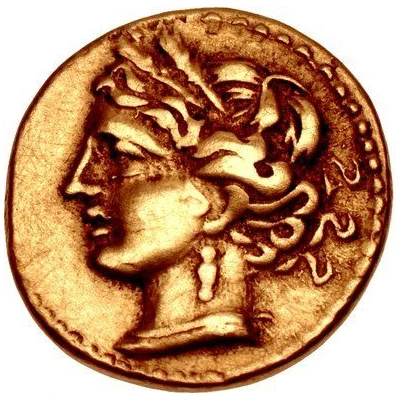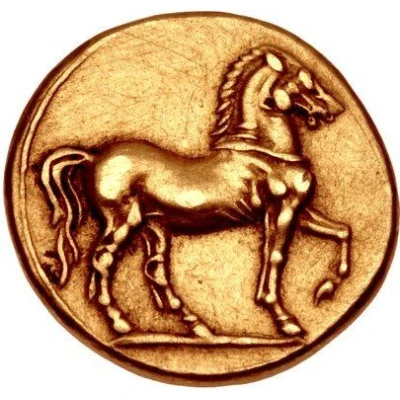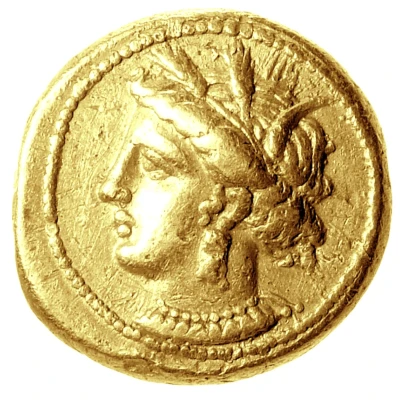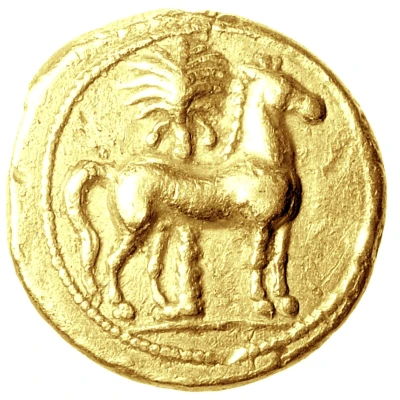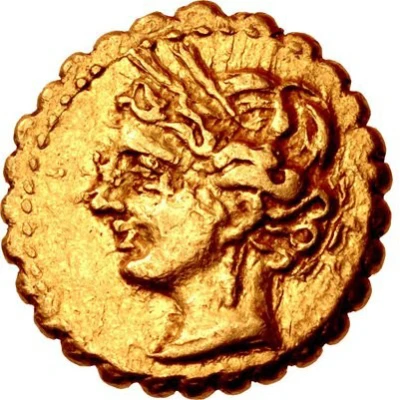
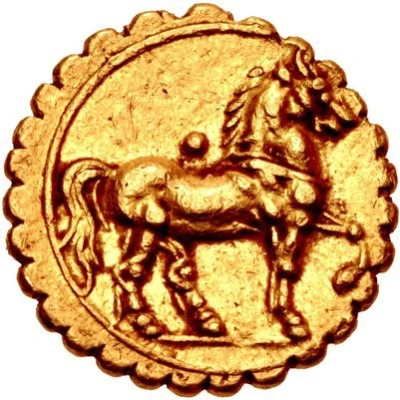

© Classical Numismatic Group, Inc.
⅖ Stater 149 BC - 146 BC
| Gold | 3.04 g | 14 mm |
| Issuer | Carthage (Zeugitana) |
|---|---|
| Type | Standard circulation coin |
| Years | 149 BC - 146 BC |
| Value | ⅖ Gold Stater (4.8) |
| Currency | Shekel |
| Composition | Gold |
| Weight | 3.04 g |
| Diameter | 14 mm |
| Shape | Round (irregular) |
| Technique | Hammered |
| Demonetized | Yes |
| Updated | 2024-10-09 |
| Numista | N#193395 |
|---|---|
| Rarity index | 100% |
Reverse
Horse standing right, with far foreleg raised; pellet above.
Comment
By the time of the Third Punic War, Carthage had limited precious metal resources at its disposal. H.R. Baldus (“Ein 146 v. Chr. verbrannter Geldbörseninhalt aus Karthago,” Chiron 33 [2003], pp. 195-201) has argued that this serrate gold issue was struck from the melted jewelry contributed by the women of Carthage during the summer of 149 BC after the Roman siege of the city had begun, an event noted by Diordoros (32.9). (source: Classical Numismatic Group Auction Catalog)Interesting fact
One interesting fact about this coin is that it features the image of a Phoenician goddess, possibly Astarte or Tanit, on the obverse (front side), highlighting the cultural and religious influences of the Phoenicians in Carthage.
